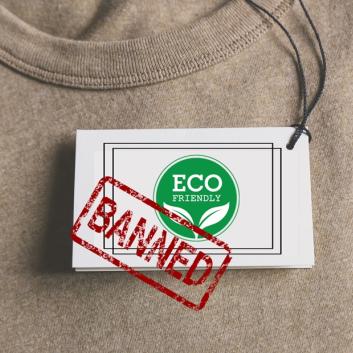The impact of carbon labels on consumer behaviour
If items sold in stores were labelled according to the carbon emissions embodied in them, would customers be encouraged to shop more eco-consciously?
Carbon labelling is a relatively new concept that enables manufacturers to display information surrounding the impact their products have on the environment.
The concept behind a climate label is that the label on a product not only tells the consumer what the product contains but also tells the planetary costs that went into manufacturing the product.
These expenses are typically hidden from consumers and might range from water usage to animal welfare and carbon emissions.
Think of a climate label like a nutritional label on a food product that helps customers make better choices.
However, just like a nutritional information label, we must question whether this is an effective approach to encouraging consumers to shop more sustainably.
A group of American researchers sought to determine this with a SUSDIET project.
They completed a study in a suburban grocery store in Ballina for 12 weeks in 2008. They identified five categories of grocery items with a high turnover and wide product choice.
These 37 products were then categorised according to their CO2 emissions generated up to the point of sale.
The labels were in place for 8 weeks, and over the eight weeks, the number of black-labelled sales fell from 32 per cent to 2 per cent while the share of green-labelled sales soared from 53 per cent to 57 per cent.
A further analysis unveiled three different trends of consumer response.
The products were labelled with one of three symbols:
- average or medium (yellow footprint),
- lower than average (green footprint),
- higher than average (black footprint).
The classification was significantly influenced by the energy used during transport and the energy embodied in the packaging.
In other words, when green-labelled products were also the cheapest, there was a strong consumer response.
However, if the green-labelled goods were not the most affordable, the reaction to the labelling was weaker.

Other research has also been conducted to analyse the effectiveness of carbon labelling for driving behavioural change.
Some findings have concluded that those who express higher environmental concern and typically purchase eco-friendly products are more likely to buy carbon-labelled items.
Researchers across the globe agree that carbon labels successfully get customers to consider the ecological impact of their choices.
A paper published in 2018 revealed the presence of a carbon label makes customers more likely to purchase a product.
Additionally, European shoppers were found to be willing to pay premium prices of 20 per cent for a product. Other studies have also backed up these findings.
A Carbon Trust 2020 survey uncovered customers were more likely to think positively about a brand when it could showcase its environmental impact on its products.
Besides, a TENZING study confirmed carbon labels could help alter consumer behaviour.
Research does still note that customers have a poor knowledge of carbon measurements.
Therefore, when carbon labels are re-designed using familiar symbols like traffic light colours, a consumer’s understanding increases significantly.
Considering the potential positive impact of carbon labelling seems to be a way to make sustainability communication more consumer-friendly while incentivising and encouraging sustainable choices.
Research has proven that carbon labelling does precisely what it is supposed to do - drive behavioural change.
According to the Carbon Trust, most consumers actively want carbon labelling.
Their survey found that over 10,000 people from Germany, France, Italy, Spain, Sweden, the UK, the Netherlands, and the US support carbon labelling on products. Carbon labels could have a significant role to play in the transition to a greener world.
However, the latest EU proposal on banning vague carbon and environmental claims concerning products and services will also force organisations to be strict on labelling.
Headline image: Unsplash
This article is published in collaboration with the Profit with Purpose Magazine.
To read more insights regarding carbon management, you can download the latest digital edition of the magazine that further explores topics such as carbon offsetting, regulations and more.

















